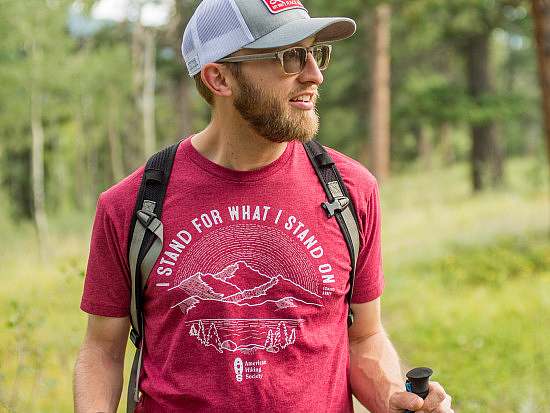Tents, tarps and bivies
Click here for a printer-friendly PDF
Your choices for a home away from home.
Camping shelters have come a long way since they were used as nomadic housing for our ancestors. While some of us prefer to sleep out under the stars, inclement weather mandates we bring a backup. While tents have long been the most common portable shelter, there are many attractive options for both minimalists and gearheads alike.
Tents
The basic definition of a tent is any fully inclosed structure supported by poles with a waterproof top. Typically, water is kept out by a detachable rainfly which provides better ventilation when removed, thus converting the tent basically into a bug hut. Tents can have any number of poles depending on the tent’s size and whether it is free-standing or not. Free-standing tents typically require more poles, but are easier to set up since they don’t have to be staked down at a campsite. Of all the options, tents are the most “bombproof,” or weather-resistant, shelter. The tradeoff is that they are the most expensive and the heaviest.
Tarps
Tarps are the choice of the ultralight backpackers. Specialty tarps weigh very little and are nothing more than square, waterproof cloth with rivets on the sides to which cord/rope can be tied. With a little bit of knowledge, they become very versatile pieces of equipment. There are many different configurations in which a tarp can be set up. Though you don’t need poles for tarps, the lack of trees can cause a problem. Many hikers who use tarps utilize their trekking poles to prop up the two ends of the tarp. The advantage of a tarp is that it is light, inexpensive, and well ventilated. The obvious drawbacks are that they require a little bit of practice to set up properly, they don’t keep out bugs, and are more susceptible to bad weather.
Bivies
Long-used by mountaineers as emergency shelters, bivvies have been adopted by outdoor adventurers for activities including ultralight backpacking, overnight kayak trips, hunter’s strike camps, and more. A bivvy’s many uses range from protecting your sleeping bag from the elements to acting as cold weather survival gear. Different bivvies will have different features, possibly including a heat-reflective coating, waterproof materials, and a lightweight pole or plastic insert to keep the top of the sack off your face. Keep in mind that some bivvies are more breathable than others. If breathability of the fabric is poor, condensation on the inside can make your sleeping bag just as wet as if you hadn’t used the bivvy.
Hammocks
Hammocks are a great alternative for those who are a little too claustrophobic for the bivy. Hiking hammocks are not like the big hammocks you might see by a pool, but they operate on the same principle. You still need two trees to set one up, but these hammocks look a little like a tent you’ve suspended in the trees. They have bug netting and tarp overhead to keep the weather out. Though they require a little bit of trial and error figuring out how to sleep in them (you’re supposed to sleep diagonally so your body doesn’t fold on itself), they are much more comfortable than sleeping on a thin pad. They weigh about the same as a bivy, but generally are not as expensive. Their biggest drawback is that in cold and windy weather they can be pretty chilly since the wind blows right beneath you. This problem can be alleviated by purchasing/making an insulating mechanism you put under the hammock.
Tarp-Tent
This new idea is quickly catching on with people who find tents too enclosing and tarps too vulnerable. Tarp-tents require one or no poles but are tied to trees like a tarp. Sides made of bug mesh connect the roof to the floating ground cloth. They are very lightweight and excellent to use in areas with a lot of insects.



